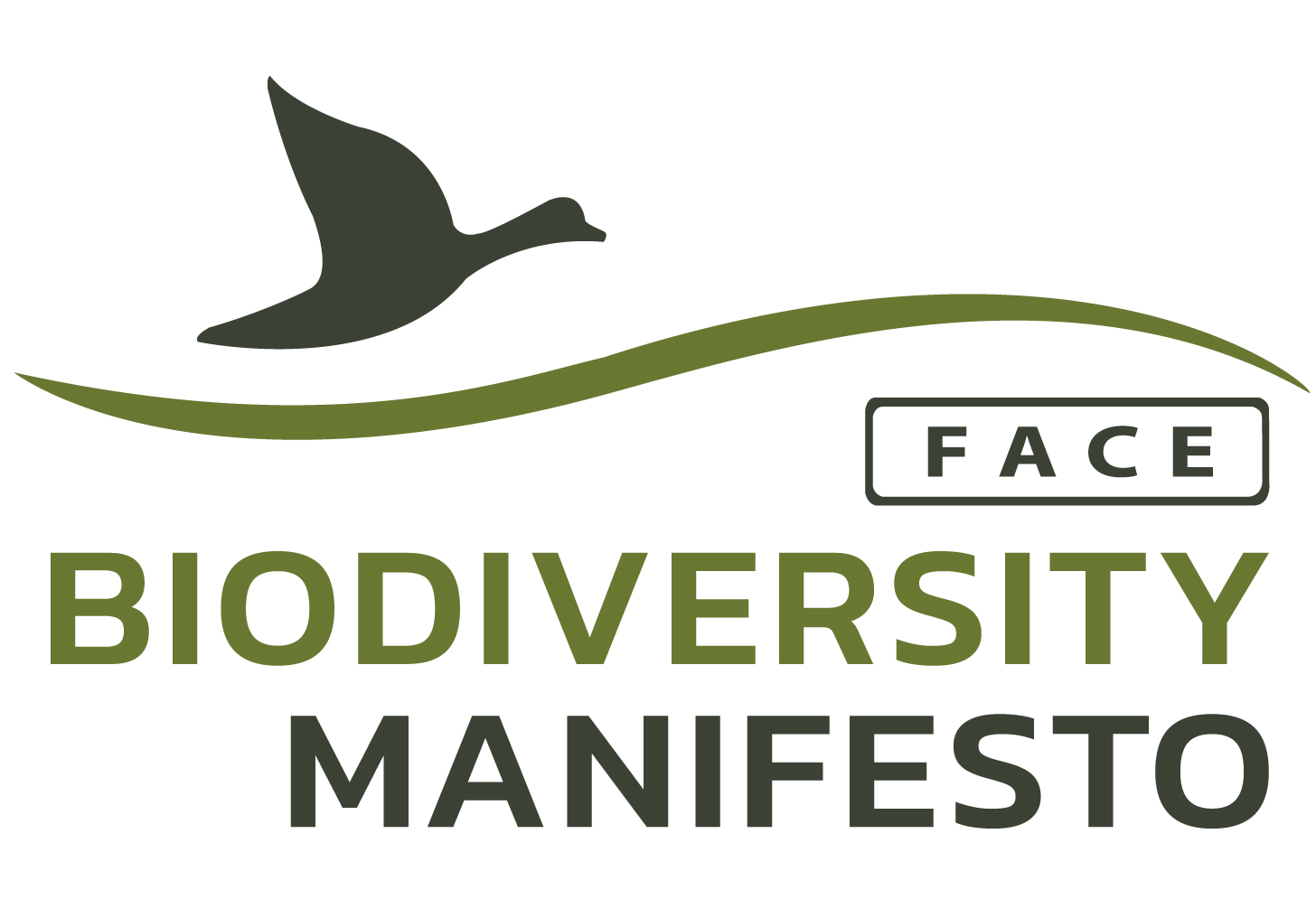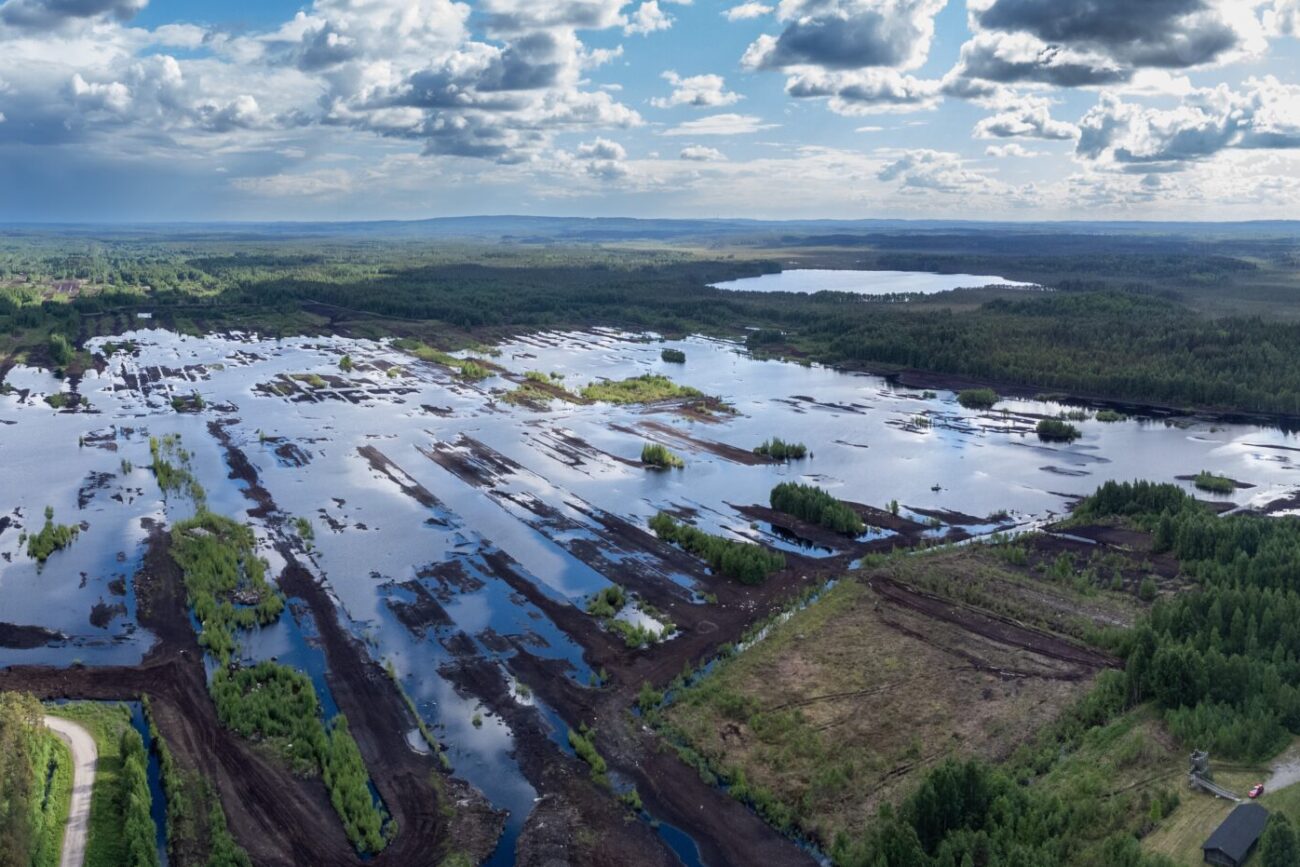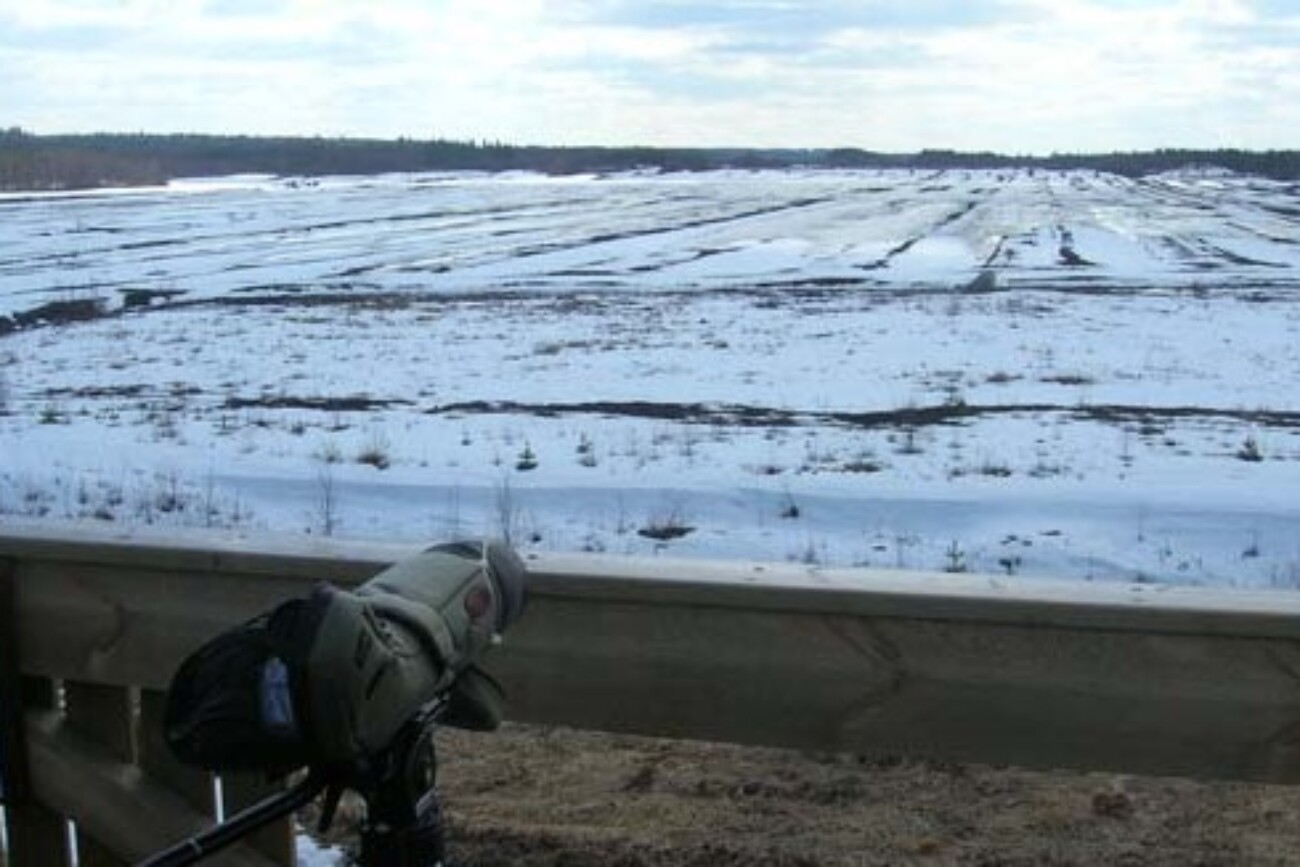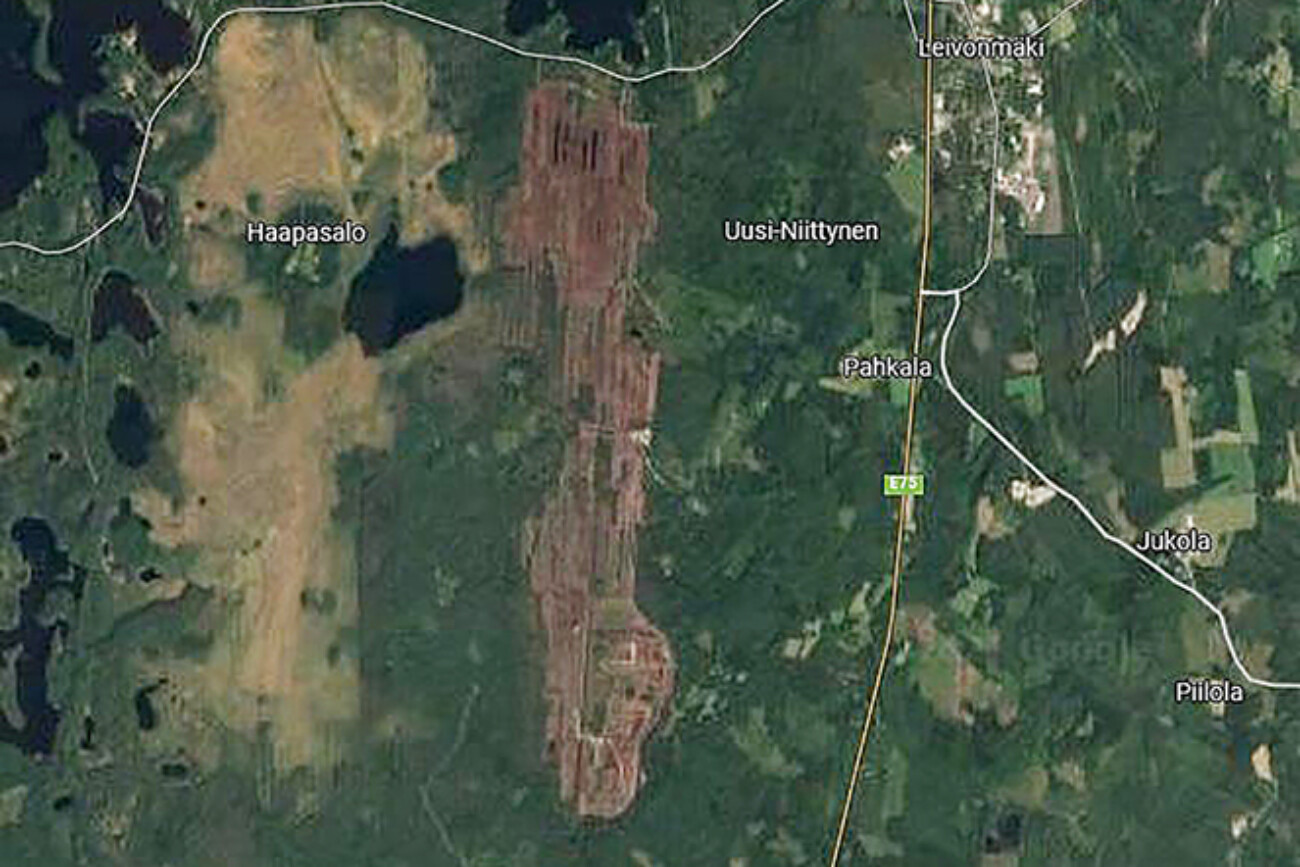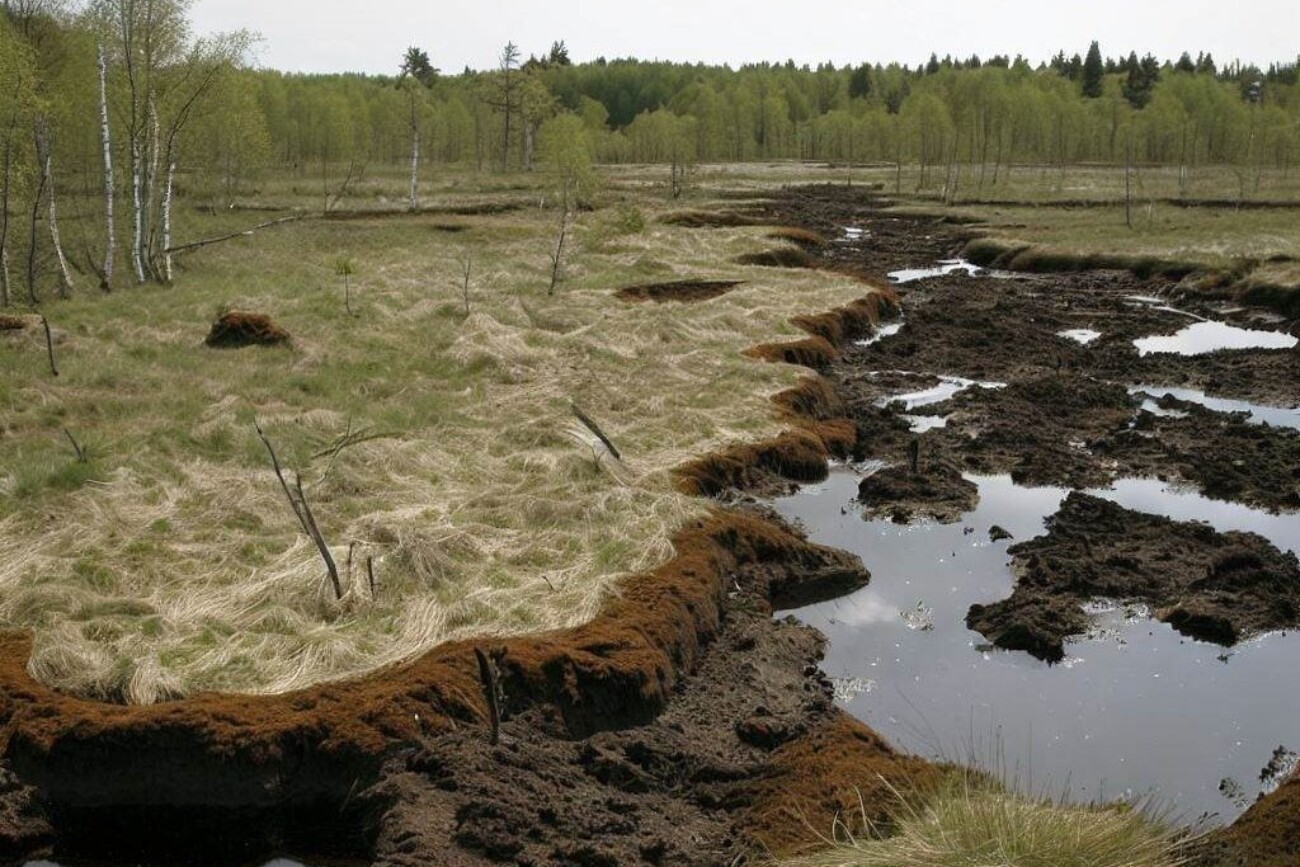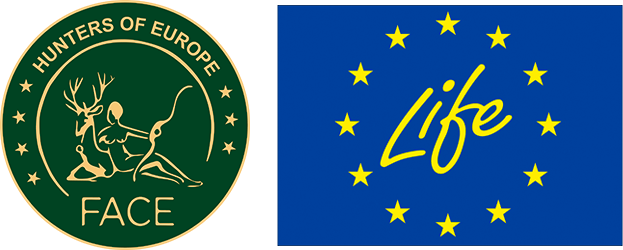From peatland burning to wetland restoring:
For years, the Haapasuo area was known for its large peat production that commenced in the 1970s. That at its era of peak production, it covered an area over 300 hectares. Overtime as other energy sources replaced the need for peat production, new forms of land-use took over in the former peat-producing areas such as forestry and agriculture. However, in recent years, as the environmental importance of wetlands came more to the fore, various wetlands have also increased their share.
As such, Finland has seen a vast area of its land being restored to natural wetlands. Wetlands are key habitats for biodiversity especially waterfowl. Successfully restoring wetlands is no small feat it requires months of planning and cooperation from all relevant stakeholders. The 70-hectare wetland of Joutsa Haapasuo is the restoration target of the Neova Group (the holder of the environmental permit for peat production) as well as several stakeholders including the Central Finland ELY Centre, the Finnish Hunters’ Association as well as BirdLife Suomi ry. The biodiversity wetland of Joutsa Haapasuo will be part of the wider, nationwide network of waterfowl resting areas. Known as the SOTKA resting areas project, it is a huge initiative in Finland dedicated to improving the living conditions of waterfowl.
POLICY RELEVANCE
Protected Areas: The EU Biodiversity Strategy for 2030, which includes a restoration initiative, calls for more community-based actions led by citizens, businesses, or social partners to protect and restore Europe’s nature. This project demonstrates yet again the longstanding activities of hunters on the ground and their essential role in implementing the strategy throughout Europe in the next 10 years.
Nature Restoration Plan: The European Commission has put forward a proposal for legally binding EU nature restoration targets in 2022. Restoring EU’s ecosystems will help to increase biodiversity, mitigate and adapt to climate change, and prevent and reduce the impacts of natural disasters.
Wetlands: More than half of Europe’s wetlands have been lost (particularly in Western and Central Europe and the western parts of Eastern Europe) since the 1970s (IPBES). Europe’s hunters play an important role in wetland management in Europe. According to the latest BDM data, most hunter projects focus on the maintenance of open water sites and the creation of new wetlands for ducks. In the future, Europe’s farming systems need to incentivise wetland restoration.
AEWA: Wetland loss and fragmentation are among the largest threats to waterbird populations. The mission of the Agreement on the Conservation of African-Eurasian Migratory Waterbirds (AEWA) (reflecting Article II.1 of the Agreement text) and the AEWA Strategic Plan 2019–2027 (objective 4) place a strong focus on ensuring that there is sufficient habitat in the wider environment for migratory waterbird populations.
Key Objectives:
The aim is to create a diverse wetland and to support the development of bird population in the area. After the construction work, the area will be allowed to develop naturally. This will be achieved by building twenty small islands in the wetland area so that waterfowls and shorebirds have more quality nesting sites. Kari Lehtinen, Director of the Central Finland ELY Centre’s Environment responsibility area says that ‘’in addition to bird lake restorations, wetland construction aims to revive severely declining waterfowl populations.’’ Wetlands have in many places served phenomenally well as nesting sites for birds. As the Haapasuo wetland is so extensive, expectations are high. The significance related to nature tourism is also likely to be considerable, as the area is located right next to Leivonmäki National Park and is easy to visit.
Waterfowl and how restoring nature benefits them:
The development of waterfowl populations in Finland has been monitored for almost four decades. The number of birds has decreased especially during the last two decades. The reason behind the population decline is the deterioration of habitats and alien beasts. In the SOTKA resting areas project, the situation of waterfowl is eased by creating a network of resting areas for waterfowl during the fall, which also includes the Joutsan Haapasuo wetland. Autumn waterfowl resting area refers to a natural or constructed waterfowl habitat. In a quiet resting area, waterfowl and waders can develop and refuel in peace before the autumn migration begins.
Currently, a significant part of the waterfowl nesting in Finland start their autumn migration unnecessarily early, at the turn of August and September. Under natural conditions, waterfowl could stay in our country for much longer if they had more undisturbed and high-quality resting areas near their breeding grounds. The longer the waterfowl stay in Finland in the fall, the better condition they leave for their migration journey and the more likely they are to return to their breeding grounds the following spring, says bird water expert Veli-Matti Pekkarinen from Metsästäjäliito.
The disturbance-free rest areas of the SOTKA project are established by the voluntary decision of the hunting right holder and/or owner. Features of the rest areas include, for example, natural and abundant food supply and they are out of waterfowling throughout the season. There is no artificial feeding at the sites. Other hunting activities at the targets can continue as normal. Catching foreign predators is even recommended to ensure breeding success.
The main goal of the project is to commit landowners and hunting right holders to this new form of management of waterfowl populations, with which, for example, Denmark has already had good experiences for a long time.
The SOTKA project continues to be a shining example of habitat restoration that many countries would do well to take a page out its book. Stay tuned for more updates on this outstanding project.

Source : Matti Pekkarinen at the Finnish Hunters’ Association https://metsastajaliitto.fi/uutiset/joutsan-haapasuon-uusi-kosteikko-osaksi-valtakunnallista-kosteikkoverkostoa
- https://www.neova-group.com/a-large-wetland-will-be-established-in-the-vicinity-of-leivonmaki-national-park/#70766658
- https://jahtimedia.fi/
Project location: Finland
Types of actions carried out: Management of habitats and wildlife, nature restoration, wetlands restoration.
Habitat types concerned: Wetlands
Protection status of the areas concerned: National protected area, Hunting reserve, Ramsar
Species concerned: Huntable species, Birds, Generalist predators, Mallard (Anas platyrhynchos)
Year the project was started: 2023 ongoing
Main partners involved: Finnish Hunters’ Association (Suomen Metsästäjäliitto) and SOTKA
